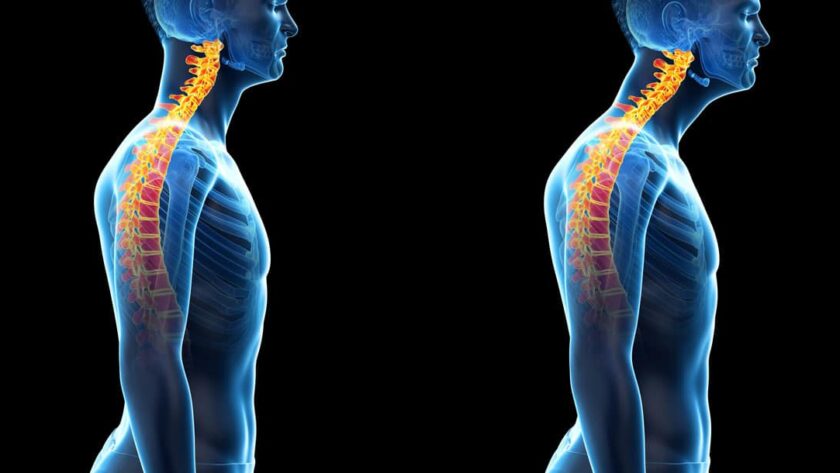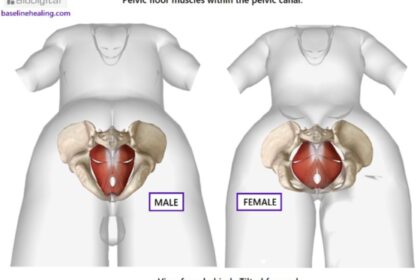Good posture is critical for musculoskeletal health, yet many people struggle to maintain proper alignment. While cues like “stand up straight” and “shoulders back” can help temporarily, lasting postural improvements require addressing the root causes.
Emerging neurological research indicates that vision and inner ear function are the main drivers of posture, accounting for a remarkable 85% of postural control. Read on to understand the science behind this finding and what it means for posture improvement.
We’ll cover how the eyes and inner ears constantly calibrate our sense of verticality and space, allowing reflexive posture adjustments. You’ll also learn simple vision and vestibular exercises to retrain these systems and achieve better upright alignment.
With a few minutes per day of strategic sensory training, it’s possible to reprogram poor postural habits and build a strong, balanced posture from the inside out.
The Critical Role of Vision & Balance For Posture
The reason vision and inner ear function are so critical for posture is that they provide constant sensory feedback about our orientation in space. The eyes allow us to visually determine if we are aligned vertically, while the vestibular system in the inner ear senses motion and head position.
Researchers found that when people had their eyes closed or were in environments without visual references, their posture control was immediately disrupted. Even subtle impairment of vision led to increased postural sway and instability. The same occurred when the vestibular system was impaired through disease or injury – balance and stability suffered.
On the other hand, people with normal vision and vestibular function automatically made continuous small postural adjustments to remain upright. Minor deviations from proper alignment were quickly corrected before they could accumulate. This allows us to maintain posture for hours without fatigue.
The remaining 15% of posture control comes from somatosensory inputs, like touch and pressure receptors on the bottom of the feet. Proprioceptors in muscles and joints also contribute information about body position.
While important, these systems cannot fully compensate for loss of visual or vestibular information. Their signals are too slow and localized to coordinate whole-body alignment.
Inner Ear Anatomy & Physiology
To understand why the inner ear vestibular system is so crucial for balance and posture, it helps to look at its anatomy. Deep in the inner ear are three fluid-filled semicircular canals, oriented in three spatial planes.
Motion of the head causes fluid displacement inside the canals, detected by hair cells. This allows precise sensation of rotational movements in all directions.
Also inside the inner ear are the otolith organs – the utricle and saccule. These contain calcium carbonate crystals layered over hair cells.
Shifts in head position relative to gravity cause the crystals to slide, stimulating the hair cells. This provides constant feedback about the head’s orientation in space.
The inner ear is essentially a biological accelerometer, gyroscope, and level! Input from the vestibular system is integrated by the brainstem to precisely adjust muscle activity and head/body position. Declines in vestibular function with age contribute to poorer balance and postural control.
Improving Vision & Inner Ear Function For Better Posture
To Improve Vision & Inner Ear Health For Better Posture, Focus On Nutrition & Targeted Exercises:
- Eat foods rich in vitamins A, C, and E like carrots, citrus fruits, and nuts to support eye health. Add This Lemon Juice Powder To Your Drinks For A Natural Boost Of Vitamin C!
- Get enough B vitamins, magnesium, and zinc which are important for vestibular function.
- Minimize use of vision-distorting screens and devices to reduce eye strain.
- Stay hydrated and avoid medications that harm vestibular hair cells.
By adopting these lifestyle strategies, you can reshape sensory-postural pathways and achieve lasting improvements in upright alignment. Proper posture is more complex than just trying to stand up straight. Supporting core systems like vision and balance is key.
Here Are Some Simple Vision & Vestibular Exercises To Improve Posture:
Vision Exercises:
- Saccadic eye movements – Quickly shift your gaze back and forth between two targets, like your thumb and pointer finger. Do several repetitions, moving your fingers further apart. This improves eye coordination.
- Smooth pursuits – Follow your thumb smoothly as you move it horizontally and vertically across your field of vision. Keep your head still. This enhances eye tracking.
- Convergence – Hold a pen or finger 6 inches from your nose. Focus on it, then slowly bring it toward your nose while keeping the image single and clear. This strengthens eye muscle flexibility.
Vestibular Exercises:
- Head turns – Turn your head horizontally or vertically at a steady pace. Return back to center. Do 10 reps each direction. Challenges vestibular system.
- Balance challenges – Stand on one foot with eyes closed, walk heel to toe in a straight line, or use a wobble board. Improves stability.
- Eye-head coordination – Move your finger smoothly side to side. Keep your eyes focused on your finger and turn your head to follow. Integrates vision and vestibular input.
Aim for just 1-2 minutes of each exercise daily. Over time, these activities will enhance visual acuity and vestibular function to support better upright posture. Be patient and stick with it!
Conclusion
Emerging research makes clear that posture is not just about muscle strength – it’s a sensory-motor skill based on inputs from the eyes and inner ear. Declines in these systems rob us of the effortless postural control we had as children.
But with targeted sensory training, we can reclaim this innate coordination. Taking a few minutes per day to optimize vision and retrain vestibular function will pay dividends in improved posture and reduced pain. Try integrating some of the recommendations in this article and see if you notice a difference in how you hold yourself. Your body will thank you!





